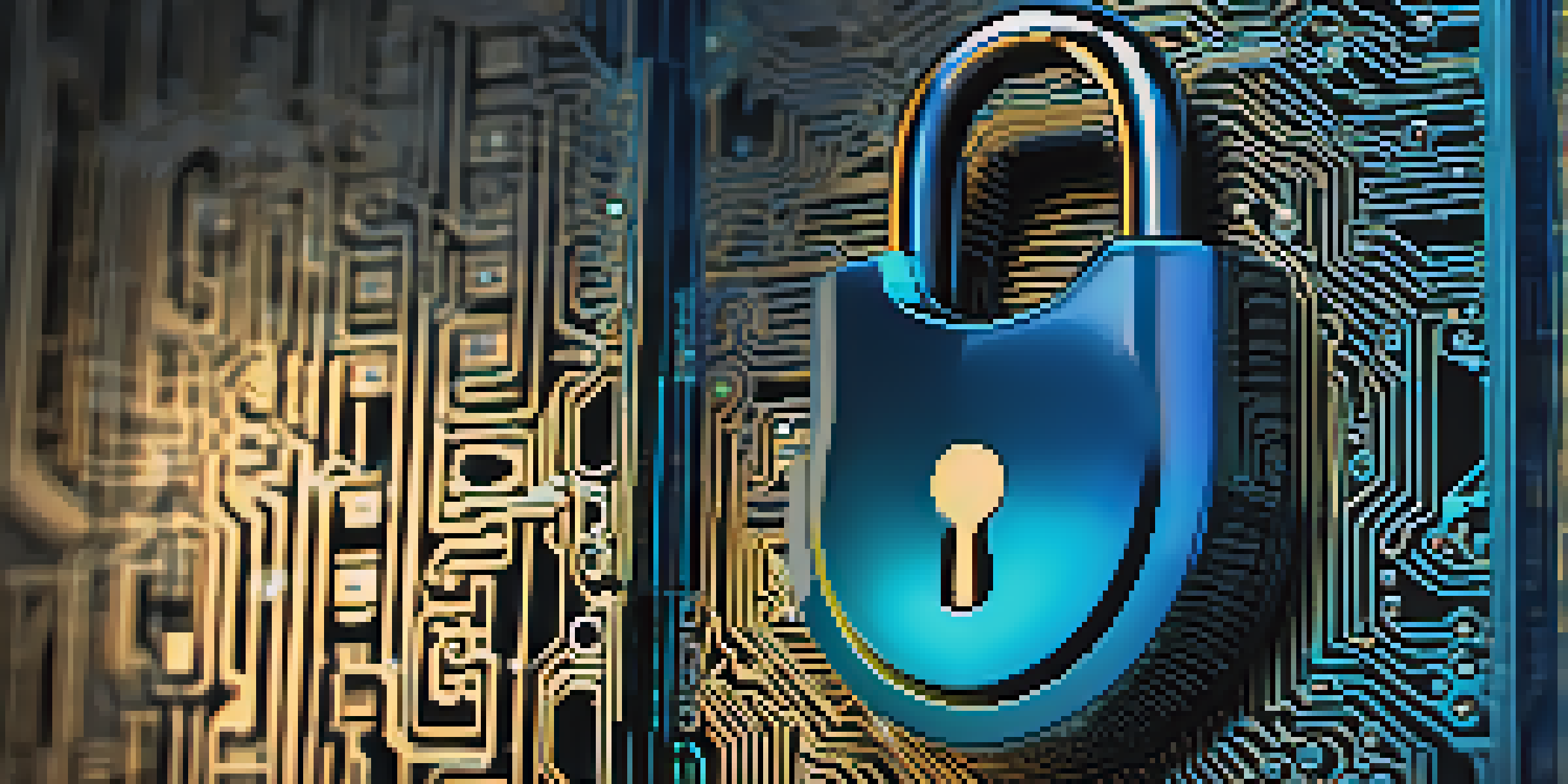The Importance of Two-Factor Authentication in Crypto Security

Understanding Two-Factor Authentication (2FA) Basics
Two-Factor Authentication, commonly known as 2FA, adds an extra layer of security to your accounts. Instead of just a password, it requires a second form of verification, often a code sent to your phone or generated by an app. This simple step can significantly reduce the risk of unauthorized access to your crypto assets.
Security is not a product, but a process.
Imagine you have a treasure chest full of valuable coins. A lock (your password) secures it, but what if someone has the key? With 2FA, you’re not just relying on that lock; you also have a combination that only you know. This combination ensures that even if a hacker manages to steal your password, they still can’t access your funds without the second factor.
In the world of cryptocurrency, where transactions are irreversible, 2FA acts as a crucial safeguard. It’s not just about keeping your digital wallet safe; it’s about having peace of mind knowing that your assets are better protected.
Why Crypto Users Are Targeted by Hackers
Cryptocurrency is a hotbed for hackers, primarily because it’s decentralized and often lacks regulatory oversight. Many users are unaware of the vulnerabilities associated with their digital wallets, making them easy targets. Hackers employ various techniques, from phishing scams to malware, to gain access to sensitive information.

Think of it this way: your digital wallet is like a bank vault, but many users leave the door slightly ajar. By not implementing robust security measures, they inadvertently invite trouble. With the growing popularity of crypto trading, the stakes have never been higher, and hackers are getting more sophisticated in their attempts to breach security.
2FA Adds Essential Security Layer
Two-Factor Authentication significantly enhances account security by requiring a second form of verification beyond just a password.
Understanding the reasons behind these attacks can empower users to take necessary precautions. By recognizing the risks, you can appreciate the importance of tools like 2FA in safeguarding your investments.
How 2FA Works to Enhance Security
Two-Factor Authentication operates on the principle of 'something you know' and 'something you have.' Your password is the first barrier, but the second factor could be a text message, an email, or an authenticator app that generates a unique code. This dual requirement makes it significantly harder for attackers to gain access.
The best way to predict the future is to invent it.
For example, even if a hacker manages to get your password through a phishing attempt, they would still need that second factor to access your account. It’s like needing both a key and a fingerprint to unlock a safe. This additional step can deter many would-be attackers, as the effort required to bypass this security is often not worth the risk.
Moreover, many platforms now offer various forms of 2FA, allowing users to choose the method that works best for them, whether it’s SMS, email, or an authenticator app. This flexibility makes it easier to incorporate 2FA into your daily routine.
Common Types of Two-Factor Authentication Methods
There are several methods of 2FA, each with its advantages and disadvantages. The most common include SMS-based codes, email verification, and authenticator apps like Google Authenticator or Authy. While SMS is convenient, it can be vulnerable to interception, making app-based methods generally more secure.
Using an authenticator app is akin to having a personal security guard. It generates time-sensitive codes that are only valid for a short period, adding an additional layer of security. This way, even if your password is compromised, the hacker would still need access to your phone to retrieve the code.
Crypto Users Are Prime Targets
Hackers often target cryptocurrency users due to the decentralized nature of digital assets and the lack of regulatory oversight.
Biometric verification, such as fingerprint or facial recognition, is another emerging trend in 2FA. These methods are highly secure as they rely on unique biological traits, making it extremely difficult for anyone else to gain access.
Challenges and Limitations of 2FA
While 2FA is a powerful tool for enhancing security, it’s not without its challenges. One common issue is that users sometimes find the process cumbersome, leading them to disable it altogether. This reluctance can stem from a lack of understanding or a desire for convenience over security.
Another limitation arises from reliance on mobile devices for SMS or app-based codes. If your phone is lost or stolen, it can create obstacles in accessing your accounts. Additionally, some sophisticated attacks, like SIM swapping, can compromise SMS-based 2FA, highlighting the importance of choosing the right method.
It’s essential to strike a balance between security and usability. Educating users on the importance of 2FA and addressing concerns can help them embrace this crucial security measure rather than shy away from it.
Best Practices for Implementing 2FA
To maximize the benefits of Two-Factor Authentication, it’s crucial to follow best practices. Start by enabling 2FA on all your crypto accounts, not just the most frequently used ones. This comprehensive approach ensures that even less active accounts are protected.
Additionally, choose the strongest method of 2FA available. Opt for authenticator apps over SMS, as they offer a more secure option. Also, consider using backup codes provided by platforms for situations where you may temporarily lose access to your primary authentication method.
Future Innovations in 2FA
The future of Two-Factor Authentication may incorporate advanced technologies like AI to further enhance security in the evolving crypto landscape.
Finally, remain vigilant and regularly review your account security settings. Staying informed about the latest security threats can help you adapt and fortify your defenses against potential attacks.
The Future of 2FA in Crypto Security
As the cryptocurrency landscape evolves, so too will the methods of securing digital assets. The future of 2FA may involve more advanced technologies, such as artificial intelligence and machine learning, to detect and prevent unauthorized access. These innovations promise to enhance security even further, making it more challenging for hackers to succeed.
Moreover, as regulations around cryptocurrencies tighten, we may see a push for mandatory 2FA on exchanges and digital wallets. This could lead to a more uniform security standard across the industry, benefiting all users by reducing vulnerabilities.

Ultimately, as users become more aware of security threats and the importance of 2FA, the adoption rate is likely to increase. Embracing these practices will not only safeguard individual assets but also contribute to a more secure crypto ecosystem overall.